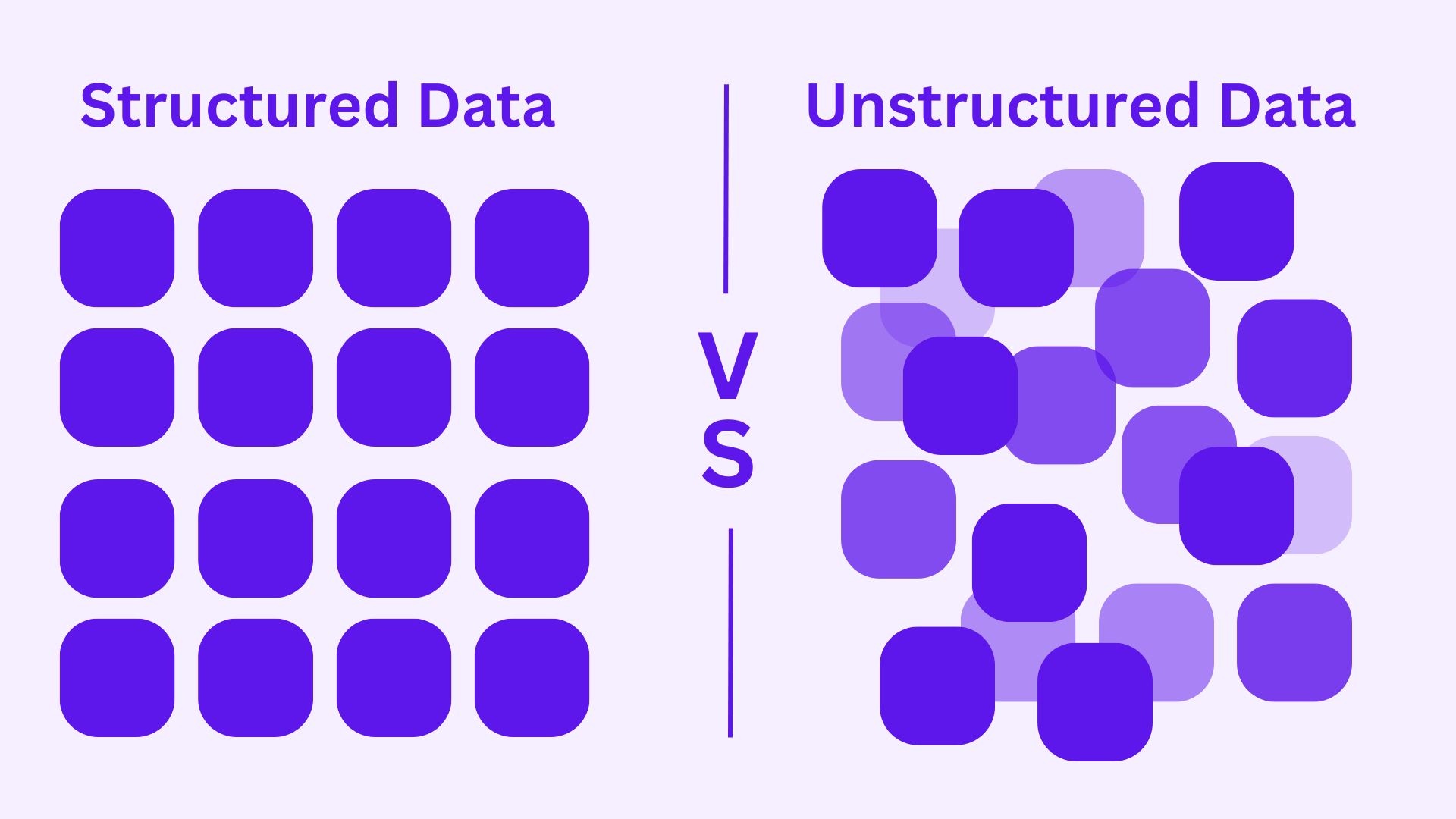Structured Data & Unstructured Data

Structured data and unstructured data are two types of data commonly used in the field of data science.
Structured data is data organized in a way that is easy to understand and use. It is usually stored in a database or spreadsheet and is characterized by a well-defined structure. Each data element is typically assigned a specific field or column in the schema, and each record or row represents a specific instance of that data.
Unstructured data, on the other hand, is data that does not have a predetermined structure. It can be text, images, audio or video and can be found in many different formats. Unstructured data is often more difficult to understand and use than structured data.
Here are some examples of structured data.
Customer Information: This information may include the customer’s name, address, phone number, email address and purchase history.
Product Listing: This information may include product name, description, price and images.
Financial Information: This information may include the company’s balance sheet, income statement and cash flow statement.
Sensor Data: This data may include temperature, humidity and pressure sensors.
Social Media Data: This data may include the number of followers, likes and shares of a particular post. Here are some examples of unstructured data.
Text documents: This information can include books, articles, emails and social media posts. Images: This information may include photos, videos and paintings. Audio: This data may include music, podcasts and speech.
Video: This information may include movies, TV shows, and live streams.
Structured data is often used in applications such as:
Data analysis: Structured data can be easily analyzed to identify trends and patterns. Machine learning: Structured data can be used to predict machine learning models.
Data visualization: Structured data can be used to create charts and graphs to help people understand the data.
Search Engines: Structured data can be used to help search engines index and understand website content.
Unstructured data is often used in applications such as:
Natural Language Processing: Unstructured data can be used to extract meaning from text and other unstructured data.
Image Recognition: Unstructured data can be used to identify objects and scenes in images.
Speech Recognition: Unstructured data can be used to transcribe speech into text.
Machine translation: Unstructured data can be used to translate text from one language to another. The main difference between structured data and unstructured data is the way they are organized.
Structured data is organized in a predefined way, while unstructured data is not. This makes structured data easier to understand and use, but can also be more difficult to create and maintain. Unstructured data is more difficult to understand and use, but can be more flexible and can be used to represent a wider range of information. The best data to use for a particular application depends on the specific requirements of the application. If an application requires easy data analysis and processing, structured data is a good choice. If an application requires the ability to represent a variety of data, unstructured data is a good choice. In recent years, the use of unstructured data has increased. This is due to the increasing availability of unstructured data and the development of new technologies that can be used to analyze and process unstructured data. As a result, unstructured data is becoming increasingly important in many different applications.
Structured data is usually stored in a database or spreadsheet and is characterized by a well-defined structure. Each data element is typically assigned a specific field or column in the schema, and each record or row represents a specific instance of that data. For example, a customer record might have fields for the customer’s name, address, phone number, email address, and purchase history.
Unstructured data has no predefined structure. It can be text, images, audio or video and can be found in many different formats. A text document can be, for example, a book, article, email or social media message. The image can be a photo, painting or screenshot. An audio file can be a song, a podcast or a speech. A video file can be a movie, TV show, or stream.
Here are some other key differences between structured data and unstructured data.
Data: Structured data usually has a fixed set of data types for each field. For example, a customer record might have the fields customer name (string), address (string), phone number (integer), email address (string), and purchase history (date). Unstructured data does not have a fixed set of data types and the data can be of any type.
Amount of data: Structured data is usually smaller than unstructured data. This is because structured data is organized in such a way that it is easy to store and retrieve. Unstructured data is often larger because it is not organized in a predetermined way.
Data processing: structured data is generally easier to process than unstructured data. This is because structured data is organized in a way that is easy to understand and process. Unstructured data is more difficult to process because it is not organized in a predetermined way.
Data analysis: structured data is generally easier to analyze than unstructured data. This is because structured data is organized in a way that makes it easier to identify patterns and trends. Unstructured data is more difficult to analyze because it is not organized in a predetermined way.
The best data to use for a particular application depends on the specific requirements of the application. If an application requires easy data analysis and processing, structured data is a good choice. If an application requires the ability to represent a variety of data, unstructured data is a good choice.
In recent years, the use of unstructured data has increased. This is due to the increasing availability of unstructured data and the development of new analysis techniques.
